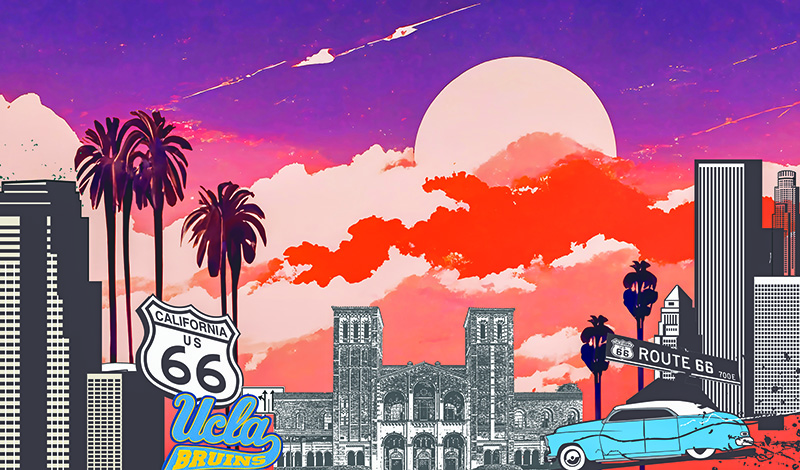In the spring of 1974, the Watergate scandal dominated the news, and the U.S. was a year away from ending its involvement in the Vietnam War. Meanwhile, still in people’s minds were the tragic assassinations of Martin Luther King Jr. and U.S. Sen. Robert Kennedy six years earlier.
In this milieu, on April 1, 1974, Ikeda Sensei delivered his first lecture outside Japan at the University of California, Los Angeles (UCLA).
To mark the 50th anniversary of this historic university lecture—one that would mark the beginning of many more throughout the world—Living Buddhism chronicles Sensei’s efforts through the recollections and reflections of members there that day.
On March 29, Sensei returned to Los Angeles from his travels to Lima, Peru. Upon arrival, he headed straight to the Malibu Training Center.[1] It was day 22 of his 36-day trip to North and South America. His was a busy itinerary, which included a meeting with University of California, Berkeley Chancellor Albert Bowker, the opening of the San Francisco Community Center, several activities in Los Angeles, a visit to the University of New Orleans and a meeting with its chancellor, Homer Hitt, a representative conference in Miami, a visit to Panama and then to Lima, Peru.
Responding to concern from an SGI-USA leader that he must be very tired, Sensei replied firmly: “Thank you, but the word tired doesn’t exist in my vocabulary. If the general in a battle were to express that he was tired, all of his soldiers would feel tired, too. My mentor, Josei Toda, trained me to demonstrate vigorous leadership in front of the members at all times as a leader of kosen-rufu.”[2] But in fact, he was tired. He recounts his feelings at the time in The New Human Revolution:
Three weeks had passed since Shin’ichi had left Japan, and he was completely exhausted. At the same time, however, he was profoundly aware that to initiate a new beginning for the kosen-rufu movement in the United States, he couldn’t afford to relax or let up his efforts in the slightest.[3]
Upon arriving in Malibu, Sensei rested only a few hours before meeting with SGI-USA leaders to discuss his schedule. He also prepared for his lecture at UCLA, carefully confirming with the translators that there were no discrepancies between the Japanese and English versions.
In the afternoon, he held a training session on the center lawn for representative youth members. He answered questions and discussed the meaning of gongyo and one’s essential attitude in faith.
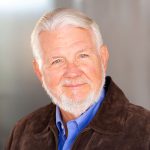
Lee Pederson (Greensboro, North Carolina): I had been practicing as a young men’s division member for five years by then. I was supporting as a Soka Group member at the Malibu Training Center when I got invited to sit with a small group of young men on the lawn with Sensei. I have always loved to read and had already studied many of his writings. I remember being very impressed by him and the attention that he gave to every person who was there. He asked us each for our birthday, and I always believed that he would remember them.
After the discussion on the lawn, we went inside to do gongyo together, Sensei leading. It was the first time that I had ever done gongyo with just parts A and C. (At the time, gongyo was three parts and we repeated certain sections five times.) After gongyo, he turned to us and assured us that we did a complete gongyo and that we didn’t have to worry about doing the middle part later. We were all surprised, but Sensei was training us on the essence of faith.
His gongyo was fast and so precise—you heard every word. It was like a galloping horse—I mean galloping at full speed. It was just so powerful.
Sunrise—Speaking on the Core of Buddhism
On March 30, Sensei continued revising the text of his upcoming UCLA lecture. The next day, he attended the Santa Ana Community Center opening in Orange County, California.
Finally, April 1, the day of his lecture, came. Before departing for the UCLA campus, he sat under a tree at the Malibu Training Center and motioned several young men to sit with him. Sensei told them: “Though I’ve spent a good deal of time … in trying to make this afternoon’s lecture as easy as possible to understand, it still may be quite difficult to grasp. For this reason, I look forward to speaking at other universities in the future. This life philosophy is the forerunner of the 21st century and the essence of it has not yet been touched upon by any scientist or philosopher. I am now just beginning to touch on this core of Buddhism, and it is only the start of things, just like the sunrise.”[4]
UCLA is part of the University of California school system, founded during the height of the mid-19th-century California Gold Rush. A founding principle was that there were things more important than gold for the success and happiness of future generations. The UC Berkeley campus opened in 1873, and in 1919, UCLA. Today, with 10 campuses, the University of California system is one of the largest, most prestigious public universities in the United States.
After arriving on campus, Sensei greeted Vice Chancellor Norman P. Miller as if they were old friends. Mr. Miller expressed his appreciation for his visit and lecture later that day. He also brought up Sensei’s lecture at Soka University in July 1973, titled “Scholastic Philosophy and Modern Civilization.”[5] He had read a translation of the lecture and found it very interesting.
Sensei spoke to Mr. Miller about creating a United Nations for Education—a body of the world’s university leaders—and they wholeheartedly agreed on education’s critical role in advancing peace.[6]
Following their discussion, Mr. Miller walked with Sensei through the UCLA sculpture garden on their way to Dickson Hall, where Sensei would give his lecture.
Students had arrived early and were waiting outside the venue. They had seen announcements on bulletin boards around campus and in the university newspaper stating that Daisaku Ikeda, founder of Soka University and leader of one of Japan’s largest Buddhist organizations, would speak about the philosophy of Buddhism.

Dave Sedmak (Redondo Beach, California): I was a 10-week member when people in my district encouraged me to go to Sensei’s lecture. I had just graduated from college eight months prior, so it was a time of self-discovery. I was one of the first ones there at Dickson Hall. There was an art history class or something in progress when I arrived. As people continued to arrive for Sensei’s lecture, the professor kept looking up, wondering, What’s going on here?
Sensei entered a hall filled with some 600 students, professors and others. The venue was so filled that some had even taken seats on the floor in the auditorium. Floral displays were featured on both sides of the podium, and a large banner hung over the stage that read “Toward the 21st Century: Lecture by President Daisaku Ikeda Founder of Soka University.”
In Japan, it was just past 7 a.m. on April 2, the day his mentor, second Soka Gakkai President Josei Toda, passed away 16 years before. As Sensei waited to take the podium, he recalled the day when Mr. Toda entrusted him with the mission of worldwide kosen-rufu. He addressed Mr. Toda in his heart, rousing courage and joy: “Sensei! I am here at UCLA, a top American university. Today, as your representative, I’m going to speak about one aspect of the life philosophy of Buddhism that I learned from you. I’m going to proclaim our Soka philosophy to the world. Please witness your disciple in action.”[7]
In his introduction, Vice Chancellor Miller praised Sensei as a renowned author, leader of a worldwide organization and “one who has created a belief in what leadership should be.”[8]
Lee Pederson: The day before the lecture, I got a call from my district or group leader inviting me to attend. It was on a weekday, so a lot of people were working. Fortunately, I was working nights so I could attend, but we weren’t sure that we could all get in. It was dependent on how many UCLA students came. And there were many! So we were outside for a while, and they allowed in as many people as they could fit; some people even sat on the floor, filling every available space.
I remember the excitement around the lecture and the feeling that it was something historic. I was impressed that someone outside of the SGI was recognizing Sensei and invited him to speak at UCLA, a very prestigious school. I remember applause throughout the lecture. The response from the whole crowd was very enthusiastic!
Sensei was talking about things that no one would talk about for many decades, for example, the state of the world and what people needed to advance past the age of conflict.
The lecture impacted me strongly, and I knew there was no way that I would ever stop practicing Buddhism. I saw the absolute value of the Soka Gakkai, what Sensei was trying to accomplish and trying to impart to us. Around that time, I firmly established my determination to contribute what I could to our movement.
I had the chance to meet Sensei on another occasion at the Soka University of Los Angeles campus in Calabasas, California. He was speaking to a group of us and said, “The purpose of this practice is for you to become happy.” I’d always been kind of a martyr type. I felt I didn’t matter so much, so I need to do whatever I can for other people. And I realized, you know, it’s not just other people, it’s me, too. And if I can’t be happy, then what can I contribute to other people?
Sensei was the warmest, most concerned human being I’d ever met—someone who sincerely cared about everyone. He’s my model for how I’m trying to live my life.
Last year, I moved from Los Angeles to North Carolina with my wife. I’m retired from working, but I’m not done living. I’m pursuing a new path as an actor now while still contributing what I can to the growth of my district.
Attachment to the Transient
Sensei shed light on the fundamental cause of problems in modern civilization throughout his lecture. Life, he said, is an accumulation of sufferings, “the burden of birth, the agony of growing old, the pain of illness, the grief of the death of loved ones and ultimately one’s own death.”[9] (See pp. 22–27 to read the full lecture.)
He then talked about the cause of sorrow: “The Buddhist answer is that nothing in the universe is constant, and that sorrow is the result of the human inability to understand that basic principle.”[10]
Buddhism teaches that all phenomena are impermanent and too much attachment to transient phenomena without belief in an immutable and unchanging Law could cause human beings to be consumed by fear and become prisoners of their desires.
Sensei explains: “To be blinded by temporary circumstance and tortured by inordinate desires is to exist only for the lesser self. To live for the larger self means to recognize the universal principle behind all things and, thus enlightened, rise above the transience of the phenomena of the world.”[11]
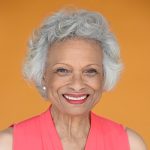
Lavelle Roby (Oxnard, California): I started practicing Buddhism in 1972. I was itching to leave Los Angeles, and that was what I chanted for. My prayer was answered, and when I came back from Europe, this was the first meeting I attended. It was this lecture at UCLA that transformed my life.
In the lecture, Sensei clarified the nature of impermanence and the idea of the greater self. The law of impermanence dictates that everything will change.
It’s when we try to hold on to something and try to make it stay the same that we suffer. Everything, good or bad, will change—the law of impermanence dictates that.
Up to that point, things in my life were always changing. There was nothing that I’d ever been attached to that I didn’t lose. My parents got divorced when I was young. I remember asking, Why can’t I hold on to anything?
This lecture was what awakened me and freed me from the suffering associated with attachment to things I couldn’t control.
At the lecture, I felt that Sensei was someone I could trust. From that moment on, I was committed to learning everything I could.
The most important thing I have carried with me throughout my practice is my determination to find and raise capable people. Over the last 50 years, I have introduced over 200 people to Buddhist practice, and I will continue in my efforts without ever losing sight of my mission.
When Sensei passed away, at first, my response was, I have lost the most significant person in my life. And then I thought, Wait a minute, you’re still going to maintain your relationship with Sensei. He’s eternally going to be my mentor.
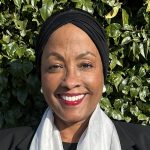
Mauri Francis (Los Angeles, California): I was a 20-year-old UCLA student in 1974 when Sensei came. I had been practicing for five years.
I felt so much pride and validation that my mentor was lecturing at UCLA. I was in awe of the profundity of Buddhism and so proud to have a mentor who was so wise and had a real grasp on what’s important in life.
Rereading this lecture, it has a much more profound meaning for me now, especially the part where Sensei talks about why people are unhappy—because they are attached to material things or attached to people when everything is transient. To be happy, we can acknowledge the transience of things and embrace the unchanging Mystic Law.
My family home burned down in the Woolsey Fire in November 2018, with everything I ever owned in it. Because of my Buddhist practice, I maintained a high life condition throughout. I had to let go of that part of my life, realizing it was all transient phenomena. I found joy in the present and gratitude for all that I had. I currently have more material and spiritual fortune than before the fire, with a clear understanding and appreciation for what Sensei had explained in this lecture.
The other day, I read that my mission is not complete until I have transferred what Sensei gave me to the youth. And that’s a real challenge because I have to embody Sensei’s heart and then share what I’ve learned. But I’m determined to help young people deepen their understanding of and relationship with Sensei.
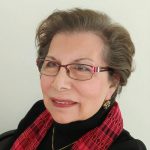
Nettie Pena (The Villages, Florida): I was a cinema student at UCLA in 1969 when I joined the SGI. I was smoking too much, drinking too much, broke and certainly not happy. In 1972, I received the opportunity to be one of Sensei’s photographers. By 1974, I had drastically changed my life, and I was very happy to film his lecture at my alma mater.
It was at a time when we filmed on 16 mm with heavy cameras made of metal, not plastic. I chanted tons of daimoku that the cameras and sound equipment would work. There was no second chance. There were no cell phones with video or video cameras to see what you were filming. It was nothing but daimoku, daimoku, daimoku to connect with Sensei and his message.
The atmosphere was electric. The students in attendance knew this was an important lecture. Sensei started his lecture by telling all the participants, “[You] will guide your country into the next century.”[12]
Those youth are the seniors of today.
A key point I remember Sensei lecturing about was the principle of impermanence. Becoming attached to things or people we think will last forever leads to suffering. Fifty years have passed since Sensei’s lecture, and I have suffered because I have lost many loved ones. But with this Buddhist practice and Sensei’s guidance, I have overcome numerous obstacles.
Sensei’s UCLA lecture was important at the time, but it is more relevant now. As a senior, I want to help the youth connect to what Sensei’s lecture was about, for they will be the ones who will guide the country into the next century.
The Greater and Lesser Self
Sensei spoke about how encouraging attachment to an endless pursuit of transient things spurred the growth and development of modern civilization. It is only natural for people to be attached to life, to feel love and affection for others, and to want to fulfill their needs. Rather than rid ourselves of these attachments, Buddhism teaches that in the depths of life resides an eternal and unchanging Law. To make this the foundation of our being is to live based on our greater self. He said this does not mean abandoning the lesser self but gaining mastery over it.
He then discussed the issue of life and death, viewing it in terms of the greater self. He explained that life and death are eternal and unchanging manifestations of life itself, and the eternal, inner self—the greater self—remains unchanged.
An individual’s life and the direction of an entire civilization are determined by whether we base things on the lesser or greater self. Sensei’s voice grew in intensity as he declared that the 21st century must be a Century of Life when we decide “whether to become human in the richest, fullest sense of the word.”[13]
Dave Sedmak: I was a pretty new member, so I didn’t understand some of what he was referring to. But toward the end of the speech, he talked about how the 21st century is going to be a crossroads, and humankind would have to decide on whether we go down the path of humanism or barbarism. As the years went on, I kept that in mind. I always ask myself what kind of progress we are making toward the goal of humanism as a society and as an organization. Every person joining the SGI is one step away from the chaos we see in society, one step closer to our goal of all people becoming happy.
I gathered from the lecture a glimpse into the direction that our organization was heading and what it wanted to achieve.
When I look back on the lecture now after practicing for 50 years, I get the sense that Sensei was trying to lay a foundation he could build upon in the future. He was trying to outline some of the basics of this Buddhism.
When I turn around and look at the landscape of my life, I see that I made a lot of mistakes and did a lot of foolish things. But because of my Buddhist practice and Sensei, I now have a life that I could never have envisioned at that time. What is the key to living that kind of life? Never, never give up your practice. Keep going no matter what.
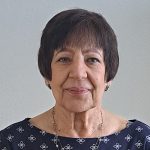
Fran Parnell (Oxnard, California): In 1974, I was going to school at night and working full time. I had received the Gohonzon in November 1972. I was busy! I was chanting every day but unable to go to that many meetings. Then I started going to film school. The company I worked for put me in the film department, so I had all this equipment—brand-new cameras and accessories I used for film school. Someone suggested that I be part of the film crew. Nettie Pena was the young woman in charge. One day, I’m working, and I get a call from Nettie: “Fran, you need to come right now. We are doing a filming and we need you.” I had no idea that Sensei was going to be there. All I knew was that I was going to support filming a lecture at UCLA.
When I got there, there was Sensei. I was on stage left and carrying all the equipment for the person who was filming.
One thing I remember about Sensei is that he was so dignified, and I felt he was reaching out with his life and heart to the youth in the audience. Sensei always treasures young people. With that same spirit, I’m determined to support and help raise the youth division while continuing to share Buddhism with people wherever I go.
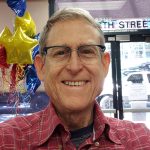
Mark Koral (Los Angeles, California): I received the Gohonzon at 17 as a senior in high school. I was lost. I knew that my life had greater meaning, but I didn’t know what to grab a hold of. I was seeking a clear path because of the incredible confusion within me.
Sensei introduced the ideas of the greater self and the eternity of life. And that the self continues through life and death. He also introduced the idea of ku or non-substantiality. I was deeply impressed by those ideas. They became anchors for my practice. The amazing philosophy he was articulating in this lecture and the way he did it made a great impression on me.
For example, at the end of his lecture, Sensei says: “Each individual person must find his or her own way. I have found mine in Buddhism, and with faith in its teachings long ago, I embarked upon the journey of life.”[14].
The way he said that was so nondogmatic. It’s very inviting. It led me to want to learn more and firmly ground my life in the kind of enlightenment he was speaking about.
Buddhism has shaped the development of my humanity and the way I understand the world and interact with other people.
My goal is to feel that my life is Nam-myoho-renge-kyo in the depths of my very being and to spread the Law based on that conviction even much more effectively than I ever have before, to reach out to people and help them. I will continue propagating this Buddhism, helping my district and the organization, to the best of my ability to advance kosen-rufu in the U.S.
Sensei’s lecture lasted 75 minutes. At the end, the audience rose to its feet and applauded enthusiastically. Students pushed toward the stage to shake his hand. Vice Chancellor Miller later remarked that “the response of the people to his lecture was very refreshing.”[15]
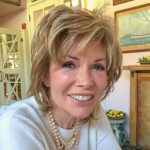
Matilda Buck (Los Angeles, California): I was a two-year member in 1974. I wasn’t able to get into the lecture hall because it was full, so I stood outside with others who weren’t able to get in. I remember hearing from the participants as they were leaving that Sensei spoke about the greater and lesser self.
What was revolutionary to me about that was he gave a speech to the public on Buddhist principles in terms that anyone could embrace. He made those concepts so translatable for American society that I felt another level of commitment and pride that: Yes, this is what I’m about right now. This explains how Buddhism works and why I’ve changed so much in these two years. The greater and lesser self, anybody can identify with that. Anybody can pick their greater self on any given occasion.
This lecture—it was so philosophically oriented. It was such a generous, broad view that anybody could grasp, and that gave me real hope for the future.
On the way back to his hotel, Sensei thought of his mentor, Josei Toda, and chanted in his heart with profound gratitude. Sensei had decided to give up pursuing university studies as a youth to dedicate himself to supporting Mr. Toda and his business ventures. But Mr. Toda, wishing to provide his disciple with an education of the highest caliber, tutored him in a wide range of subjects. As a graduate of “Toda University,” Sensei’s lecture at UCLA was a realization of his mentor’s dream and an effort to repay his debt of gratitude by presenting his mentor’s thought and life to others.
Mr. Toda would often say: “We need to let the world know that the Buddhist teachings of compassion and respect for the sanctity of life, the philosophy upheld by the Soka Gakkai, are important ideas that can lead all people to happiness. Universities can play a key role in this regard. When universities around the world come to appreciate the significance of Buddhist philosophy and begin to study and research it, a new intellectual movement will be born.”[16]
After the lecture, when Sensei reached the hotel, he said to the leaders traveling with him: “I would like to continue giving university addresses in order to make Buddhism widely accessible. I think the day will even come when I will speak at such distinguished institutions as Harvard.”[17]
True to his word and determination, Sensei would give 32 lectures at universities and academic institutions worldwide, including Moscow State University, Peking University, the Institut de France and Harvard University,[18] paving a golden path for peace.
From the April 2024 Living Buddhism
References
- Malibu Training Center: The former facility for SGI-USA activities often used during Ikeda Sensei’s visits to the U.S. ↩︎
- The New Human Revolution, vol. 19, p. 165. ↩︎
- Ibid., 166. ↩︎
- April 8, 1974, World Tribune, p. 1. ↩︎
- See A Lasting Peace, pp. 59–68. ↩︎
- See The Light of Learning, p. 120. ↩︎
- NHR-19, 173. ↩︎
- April 8, 1974, World Tribune, p. 4. ↩︎
- See p. 23. ↩︎
- See p. 24. ↩︎
- See pp. 24–25. ↩︎
- See p. 22. ↩︎
- See p. 27. ↩︎
- See. p. 27. ↩︎
- April 8, 1974, World Tribune, p. 4. ↩︎
- NHR-19, 180. ↩︎
- NHR-19, 181. ↩︎
- See NHR-19, 181. ↩︎
You are reading {{ meterCount }} of {{ meterMax }} free premium articles

